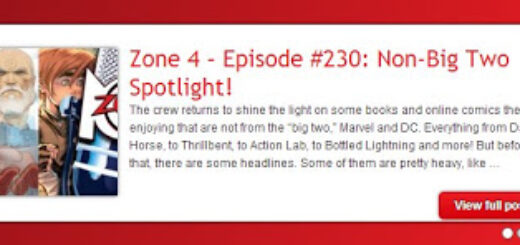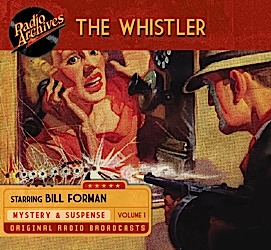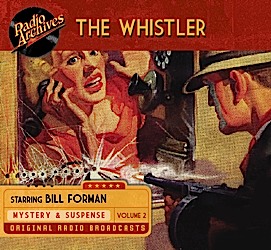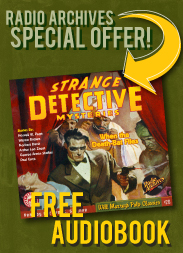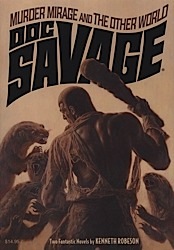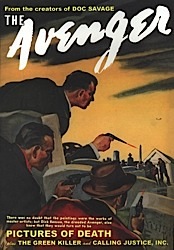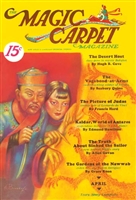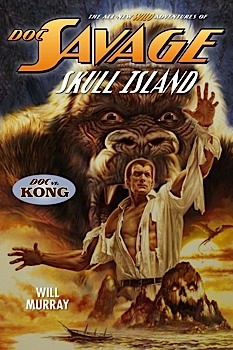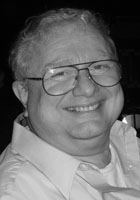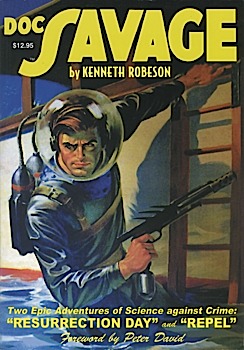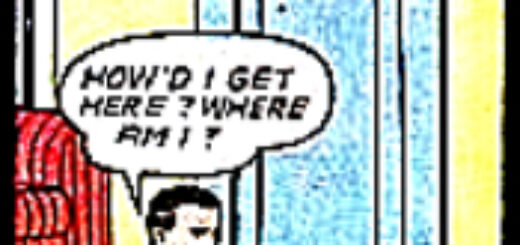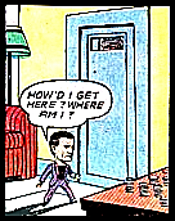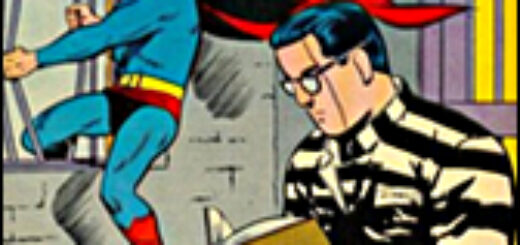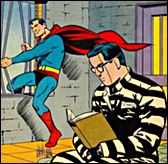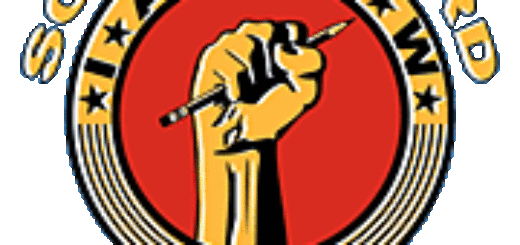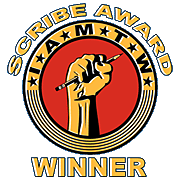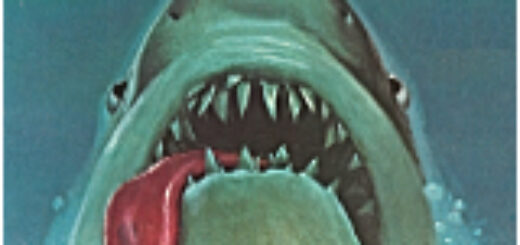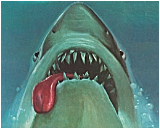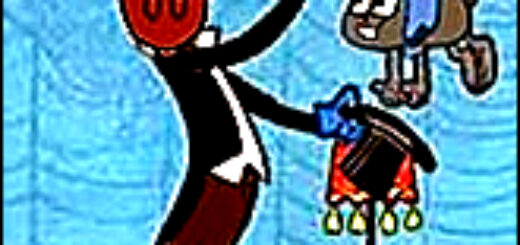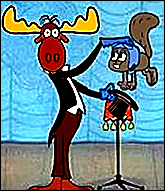Emily S. Whitten: Agents of S.H.I.E.L.D. – The Interviews!
 It’s stating the obvious to say that the modern Marvel movie machine has managed both to churn out a slew of awesome, successful movies, and to not fall into the trap of assembly-line production – in other words, that the movies, while they’ve built on each other beautifully and gained momentum with each new release, are all pretty unique and true to the characters and storylines they draw from. But how does that translate when Marvel tries to move such epic stories, in both scope and character, to the small screen? Pretty well, it turns out, with Joss Whedon and co. running the show.
It’s stating the obvious to say that the modern Marvel movie machine has managed both to churn out a slew of awesome, successful movies, and to not fall into the trap of assembly-line production – in other words, that the movies, while they’ve built on each other beautifully and gained momentum with each new release, are all pretty unique and true to the characters and storylines they draw from. But how does that translate when Marvel tries to move such epic stories, in both scope and character, to the small screen? Pretty well, it turns out, with Joss Whedon and co. running the show.
The Agents of S.H.I.E.L.D. pilot aired Tuesday the 24th, and proved that it is possible to tell small screen stories against the background of the current Marvel cinematic series. In fact, it gives the opportunity to tell larger stories with less – as in the pilot, where the plot builds on the fallout from The Avengers and the Battle of New York. Without showing the grand, epic event, the show is able to easily reference the new state of the world for both S.H.I.E.L.D. and ordinary citizens. Watchers who have seen the movie will instantly understand the world-building at work; and even those who somehow missed the movie will easily pick up on it and understand why as the series begins, S.H.I.E.L.D. is finding its place as “the line between the world and the weirder world.”
That weirder world could not be in better hands than those of Joss Whedon and his team. The pilot is an excellent blend of Whedon show elements that we know and love – witty banter, engaging characters (including women!) kicking ass and taking names, cameos of actors from previous Whedon projects (Ron Glass! J. August Richards!), and a mixture of action, adventure, wonder, mystery, and heart; and the Marvel canon and characterization that Marvel fans live for. The S.H.I.E.L.D. character we’ve come to love from the movies, Coulson, continues to be characterized as an endearingly geeky guy, and yet is now developing into a leader as well; and the new characters, like Skye, Ward, Fitz, Simmons, and May, are already, in one episode, fleshed out enough for viewers to care about what happens to them next.
We also get to see glimpses of the Marvel cinematic universe in elements such as Maria Hill’s appearance, and the involvement of the Extremis virus. There are little Easter eggs for Marvel fans (like the almost-but-subverted-at-the-last-second Spider-Man quote); and references to people cosplaying as their newly discovered in-world superheroes, the Avengers. And most interestingly, from the very first, we are introduced to a take on S.H.I.E.L.D. that’s not entirely heroic – a S.H.I.E.L.D. that exists in the gray area of trying to protect Earth’s inhabitants from danger, and running the risk of becoming the invasive danger that people may have to fear. There’s an obvious analogue to the real world’s decreasing respect for privacy, and it’s accompanied by a serious (and seriously depressing) take on the current real-world economy and our displaced, unanchored work force of unemployed or marginally employed adults. Despite those themes being pretty darned depressing, I was happy to see them tackled head-on, and will be interested to see where the writers go with that next.
Speaking of the writers, at SDCC this year I sat down to chat with the writers and cast of the show, and now, I get to share those chats with you! (And although sadly my battery died too soon, I can also share a couple of short video clips of Joss Whedon and Clark Gregg, along with newly-uploaded clips from the Psych press room, I Know That Voice panel, and more.) Enjoy!
Jeff Bell (executive producer, showrunner, and writer) and Jeph Loeb (head of Marvel Television and executive producer)
The characters feel like broad archetypes at this point – the loner who doesn’t play well with others; the badass woman; the geeky pair…how quickly will we see them be fleshed out, or see other sides of them?
Bell: That’s the whole point of the TV show. We can’t do what a Marvel movie does every week, because we don’t have 250 million dollars a week. We’ve got good chunks of money to tell stories, but most of the stories are going to be about the characters. And arcing those characters out; finding relationships – who likes who, who doesn’t like whom, and why; secrets between all of them. So…I think no one’s exactly who you think they are, and we’re building that, hopefully for a long period of time.
Loeb: I also think that one of the things that makes our show different from the movies but still within the Marvel universe is that it’s about the intimacy of the characters on a television show. Television once upon a time was ‘being invited into your living room.’ It’s gone to the next level. It’s now on your laptop, on your tablet; and guess what, now it’s on your phone, which is the most intimate thing; it’s touching your face. So let’s hope that those people, when they touch your face, actually are people that you love and are complex and have all the richness that you know from shows that Joss has done in the past, and that all the people who are involved with this have done in the past. It’s the fun of it.
With the movies and all, when did this show start coming into production? What was the process?
Loeb: We started Marvel Television three years ago, with our partnership with ABC Studios and ABC; we knew we wanted to have a show that would make a lot of noise; and obviously there were some things we hadn’t developed, because that’s a process – but it was really right after The Avengers that Marvel had a conversation with ABC, and we had this idea for a show about S.H.I.E.L.D.
Bell: Wait, whose idea was it?
Loeb: (pointing to Clark Gregg) It was that man’s idea.
Bell: He said, “You know what would be cool? If I’m not really dead.”
Loeb: True story – Clark and I were at a signing, because Clark actually appears in our animated series, Ultimate Spider-Man, as Agent Coulson, and he turned to me at one point and said, “I have a secret: Coulson lives.” And I said, “Yes.” And he goes, “On television.” And I said, “Yeah I know. But people don’t know you’re dead yet, so we need to do that part first; and then I think we can probably talk to the network about it afterwards.” And Clark said, “Okay, as long as that’s the plan.” But to give credit where credit’s due, none of this would have started without Joss, Jed, Maurissa, and Jeff, who came up with a spectacular pilot, and an arc out for literally about 100 episodes, that enabled everyone at Marvel to get incredibly excited about it, and produce a show that is worthy of the pedigree of the movies and everything else that we do at Marvel.
Since the rights to some Marvel characters like Spider-Man and the X-Men are with other studios, will we be seeing any of that on TV at all?
Loeb: Only in animation. Obviously the Marvel universe is a vast expanse of characters, but I think the fun of this show in particular is that Jeff and Jed and Maurissa and Joss have created, in Coulson and Ward and May and Fitz and Simmons and Skye, really memorable characters who will now join the Marvel universe in a very major way.
In the development, were there ever any elements that Marvel wanted that ABC was not excited about?
Loeb: This has been an incredible partnership. I know it always sounds like, “Ooh, silver clouds…” but Jeff, talk about that first day, when you guys came in and told the story to the network.
 Bell: Well here’s what’s nice, because traditionally, Marvel skews to a lot of guys. And ABC kind of skews more female. And then there’s Joss, who’s like the perfect Venn diagram of what you want in a show. So it’s great to see Joss’s version of a Marvel series – because ABC’s interested in emotion, and Joss is interested in emotion, and so it’s really about keeping that as our bulls-eye, and then finding different stories around that. But ABC loves that part of our storytelling. And then if we can do that against the giant, epic scope of a Marvel canvas, with superheroes and things from other places, and cool gadgets from S.H.I.E.L.D. and stuff like that, it’s just a different way to tell emotional stories. And so it’s been a great fit.
Bell: Well here’s what’s nice, because traditionally, Marvel skews to a lot of guys. And ABC kind of skews more female. And then there’s Joss, who’s like the perfect Venn diagram of what you want in a show. So it’s great to see Joss’s version of a Marvel series – because ABC’s interested in emotion, and Joss is interested in emotion, and so it’s really about keeping that as our bulls-eye, and then finding different stories around that. But ABC loves that part of our storytelling. And then if we can do that against the giant, epic scope of a Marvel canvas, with superheroes and things from other places, and cool gadgets from S.H.I.E.L.D. and stuff like that, it’s just a different way to tell emotional stories. And so it’s been a great fit.
How much of the first season is planned out? Are there overarching themes we should know about?
Loeb: We know where we’re going. When you go in to talk about a television show, your initial order is the pilot plus twelve episodes. So you always have to have a plan for that, and so we go in and talk about what we will do for that; and then if successful and there is a back nine, you should have ideas for that as well. So we went in with that, and also a sense of what a second season would be, and right now we’re shooting episode two, and prepping episodes three and four. That’s where we are in the cycle.
How much of a procedural is this going to be?
Loeb: The show is about investigating the weird, the unusual, the strange, and the phenomenal that are in the Marvel universe. It is about a team that assesses that threat. Sometimes that threat is something that they’re going to have to take care of; and sometimes that threat is something that needs to be protected from somebody else that wants to exploit that sort of thing. The show enables us to tell stories that are in straight-ahead procedurals; but also there are all different kinds of things that you’ve come to know from your Whedon shows.
In the movie, S.H.I.E.L.D. responds to several disembodied voices that happen to be a real menace; are you addressing that here?
Loeb: Our plane is a mobile command unit that Director Fury has sort of allowed Coulson to do; and so we tell those stories. There are times when we will connect with big S.H.I.E.L.D. I’m not saying that we will connect with Director Fury; but we will tell stories within the entire S.H.I.E.L.D. universe. They’ll be international, and go all over the planet. Sometimes it’s just us; sometimes it’s big. But going back to your procedural question – it’s not a body of the week story; but we are trying to do standalone episodes the way we did on Angel and Buffy, that had an emotional element to it, and you find metaphors within it that allow you to tell the stories that reflect who your characters are. Sometimes that’s procedural, yes, but the way we break them, really, is about the emotional lives and what kind of story we want to tell.
What’s really important about the show at the end of the day is that you have that feeling of epic adventure and at the same time, the human spirit. You want to be able to be invested in these people and the show. I think that what is so remarkable about the pilot, and then it’s carried over, is that there are moments of great humor, moments where you’ll get teary-eyed, and then there are moments of like, “Wow.” If you can capture that at 8:00 on a Tuesday night, you’re doing kinda okay!
Bell: Coming up with stories, the words we have up on the wall are: funny; sad; wondrous; beautiful – and if we can get all four of those into an episode? We’re really happy. But Marvel is very aspirational; it is optimistic – our characters are enthusiasts; they’re not cynics. They’re excited about science, about history, about the world – and so we try and show that.
Are you going to pull from the canon stories; for example, something like Civil War where S.H.I.E.L.D. played a big part?
Loeb: The Marvel universe is the Marvel universe – and it’s like with everything else that we do, whether it’s publishing; games; the animation world; the cinematic universe; and now the television universe – it’s all one world. Sometimes certain things aren’t going to line up exactly along the way. This is obviously one that is tied in more to the cinematic universe. But there is nothing that would stop us from doing any kinds of stories, as long as it is something compelling, and emotional, and fun.
Maurissa Tancharoen & Jed Whedon (executive producers and writers)
It’s clear in the pilot that Agent Coulson is in charge of things, and a key character; is that something you’re going to explore more?
Tancharoen: Yes; we’re highlighting someone you’ve only seen glimpses of in the Marvel cinematic universe, so I think yes, we’re giving him some authority, some swagger. He already had that, naturally. Now we’re just able to display it.
Jed Whedon: We feel like he’s a great company man; he’s the face of S.H.I.E.L.D.. Now we get to reveal more about that character. In every film, Coulson was expanded on a little bit. In Avengers he got some real meat. So now we get to dig in even further. And Clark is the perfect person to do that with. We love him very much.
It was great to kind of see Cobie Smulders in it for a second; do you envision her appearing now and then?
Jed Whedon: There are certain rules that we have to obey; but we are open to anything.
Tancharoen: Right – I mean, it is a goal to be able to pull people from what’s already been established, and bob and weave them throughout our series.
What’s the split of new characters created in the show, and people we might have seen in the comics, either in passing or as main characters? How much will be canon versus new material?
Jed Whedon: It’s a little of both. Right now we’re working from story first, and then there’s so much in the comic world, that a lot of the ideas we come up with, we can say, “Is there a guy that does that?”
Tancharoen: And the answer is yes. Always. That’s a good and a bad thing.
Jed Whedon: It works both ways; that makes it easy and fun.
When you’re writing stories for the season, how mindful do you have to be about weaving in stuff from Thor: The Dark World and Captain America: Winter Soldier, and the cinematic universe?
Tancharoen: We’re always communicating with what’s happening in the feature universe; and our goal is to complement one another, and weave our storylines in there, or maybe there will just be a little kernel that you see over there and vice-versa.
Jed Whedon: There’s lots of fallout from the films that we can play with, and we can lead into them in a way. We want to make it so that it’s more rewarding to watch both, on both ends. So if you’re watching the TV show you’ll get something in the movie or be like, “I know what that means.”
Who from the Marvel universe would you most like to weave in to the story?
Jed Whedon: Every Avenger.
Tancharoen: If we could.
Jed Whedon: We’re open to all those people.
Tancharoen: We joke about having an episode where the whole thing is like, “Oh, you just missed Iron Man. Aw man, Thor was just here! He had his shirt off.”
Jed Whedon: But we don’t want the show to become that, where you feel like you’re missing something. We want to exist on our own.
Tancharoen: And we’re hoping that people will fall in love with our cast of characters, and maybe not even have that expectation.
Jed Whedon: And then if it does happen, it will be rewarding, and not disappointing if it doesn’t.
How familiar are you with the comics – have you been readers for years? Are you still doing research by reading back issues?
Jed Whedon: There’s so much reading that we have to do; when we’re not working on the show, we’re reading.
How unreliable an authority figure is Coulson going to be? Is he going to be lying a lot? Will we see people challenge his right to be in charge?
Jed Whedon: I think we’ll figure that out as we go along; at this point, we can’t say much. …It will be cool, and stuff will happen.
What are you most excited about for the pilot, and how would you describe if to someone who hasn’t seen it?
Jed Whedon: Fun is what we’re going for.
Tancharoen: I think something that exists in all the Marvel movies is their humor. There’s tons of action and humor. That’s something that’s existed in a lot of Joss’s work as well. It always comes back to the humor, or there’s a really poignant emotional moment. We’re trying to do that on our show. Our cast of characters are all real human people. We’re dealing with the world post-what happened in The Avengers, so the entire population is going through this transition period of realizing that there are aliens, there are gods, there are monsters, and so I think a big part of our team’s job is going to be helping those people through it.
What’s your experience writing Coulson and the newer characters?
Jed Whedon: Coulson is really fun to write for. Fitz / Simmons is great – when you write a Fitz / Simmons scene, it ends up being too long.
Tancharoen: Because you just want to go on forever; even though it’s all science talk. The way they bicker and banter is fun.
Jed Whedon: And one of the things that’s very fun about this process is discovering the characters as we go. We just started shooting the second episode. Seeing all the things we’ve been discussing for months come to life is very rewarding.
Tancharoen: And we have a fantastic cast. They all embody everything we picture so well. We’re really excited for everyone to get to see them.
What are the greatest challenges of introducing new characters?
Tancharoen: We feel the pressure.
Jed Whedon: And when we don’t feel the pressure, people say, “How are you doing with all that pressure?” We have a duty to a lot of fans. But our approach is always to try to have fun, and try to make something that we would enjoy. We want to make something for everyone; but also something that, if we sat down and watched it, we would have to watch the next one.
Tancharoen: I think our goal is much like what Joss accomplished in Buffy – it will have stand-alones, with the mythology woven throughout. And every week there was a monster of the week or challenge of the week that was a metaphor for the emotional journeys our characters were going on. So hopefully if we do that successfully, and there’s humor, and there’s action, and there’s Marvel in there; hopefully the Marvel fans will be satisfied.
How challenging was the casting process?
Tancharoen: Very. We swept the world. We had casting offices in Australia, the UK, Toronto, Vancouver, New York, and Los Angeles, going at the same time. And Brett Dalton, who plays Ward, he read in New York, on tape, and we saw him on the tape and brought him in for a screen test. Chloe is somebody who we brought back several times.
Jed Whedon: The other thing I’ll say that was great is, we didn’t compromise. And we got our first choices in every category. That’s rare and you’ll see it when you see the show.
Tancharoen: And Clark at the center of them really works.
How hands-on will Joss be moving forwards?
Jed Whedon: He’ll be involved a lot in shaping stories. We’re in constant contact. But he does have other things on his plate that people are excited about right now…
Does he read every script?
Jed Whedon: Oh yes, and every idea is run by him, and so I’m sure he’ll come in at some point and write some more…
Tancharoen: Everyone will definitely feel his presence, even when he’s not right there.
Chloe Bennet (Skye) & Brett Dalton (Grant Ward)
Skye starts out not trusting the people in S.H.I.E.L.D.; and it seems like by the end she’s on board. Do you think that’s it?
Bennet: No! I don’t think that’s it. I think one of Skye’s biggest assets is being able to…she has really good people skills. She can fool people; she hides stuff very well. She’s a people person, she can get her way and manipulate things. I’m not saying she’s doing that – but what you see is not all you’re going to get with Skye.
How would you introduce your characters?
Dalton: Agent Grant Ward is a specialist. He’s highly trained in espionage, hand-to-hand combat, tactical operations, weapons…I could go on. This is a looong list. But he’s a lone wolf. He doesn’t know what it’s like to be part of a team. He’s used to being the solution; the entire solution. So I think what you’ll see is him figuring out what to do now.
Bennet: Skye is a computer hacker. Very good with computers. But she’s that rare case of computer hacker where she’s not Girl with the Dragon Tattoo and kind of weird. She’s a people person; she’s outgoing and she knows how to work both computers and people. She kind of stumbles into the S.H.I.E.L.D. world and mixes things up a bit. I think she’s like the last piece of this puzzle that Coulson’s putting together as a team. Everyone complements each other in their own little way.
Dalton: You have skills that none of us do.
Bennet: And you have skills that Skye doesn’t have. Skye and Ward balance each other really well, I think. They’re polar opposites, yet both really talented. He’s a lone wolf; Skye is an activist. She’s about bringing the people together; people uprising against something that may not be fair or just. I think they’re going to learn from each other, maybe. …Maybe a little more than learn…? I dunno…
 How much do you know about the Marvel universe? Do you recognize the references and Easter eggs?
How much do you know about the Marvel universe? Do you recognize the references and Easter eggs?
Bennet: I’ve always been a fan of the movies. And then being cast, you’re like, “I gotta go read everything, now!” It’s really interesting. I’ve re-watched all the movies; and I get why fans are so loyal to the brand.
Dalton: And it’s an ongoing universe, too. The Battle of New York, that happens, doesn’t just disappear, like, “New York is just fine again!” in the next movie. It’s an ongoing, continuing universe, which is really interesting.
Bennet: With the movies and the show. The Battle of New York really does affect the pilot, and our characters in the show.
Dalton: There’s continuity between them.
Brett; in the show, you’re kind of the straight man. Do you hope you get to do more comedy?
Dalton: Well here’s the thing: I actually always thought Ward was hilarious. You know, he has little lines in there.
Bennet: And Ward thinks he’s hilarious.
Do you guys improv at all?
Bennet: You don’t have to with writing like this. Joss writes words; I speak them. You know, you improv the way you say things.
Dalton: The writing is just that good, honestly. And I’ve worked on other things where they give you that opportunity to riff, but they’ve just done such a good job with the writing.
Bennet: There’s a flow in what Joss writes, and the way the characters speak. It’s just easy, and it’s different, and it’s funny; and the timing – you can just read it when you see it. It makes it so enjoyable.
How much do your characters get to kick ass?
Bennet: Skye not so much, yet, uh…
Are you looking forward to that?
Bennet: Yes. I’m always saying, “You can let me do it! I’m fine; I’ve got six brothers! I won’t be worried about getting hurt!” I’m really looking forward to hopefully Skye being taught by Ward.
Dalton: Yeah, you know, I could see that happening.
Do you have a favorite Marvel character you’d like to see come into the show? Or a specific Marvel actor you’d like to work with?
Bennet: My favorite Marvel character is Jean Grey, and Jean as the Phoenix; I don’t know if that would be such a good thing if she came into S.H.I.E.L.D., unless it was as Jean Grey; but that won’t happen. But I think I wouldn’t mind Thor coming back. Not to do anything; just to come by and see me.
Dalton: I’m the hugest Robert Downey Jr. fan. He’s so good. Even if he was just on the intercom or something. Even if it was just his voice; anything. I’d love, love, love to work with him.
Bennet: If he was working, and I wasn’t working that day, I’d just come to set anyway.
Dalton: Yeah, it’d just be like, “Why is everyone on set today…?” And I’d say my favorite Marvel character is The Punisher. Good ol’ Frank Castle. Because he’s just a guy with a ton of skills; he doesn’t really have a superpower – he just has guns. And vengeance.
Bennet: He’s like Ward, almost.
Bennet: What about Spider-Woman? Spider-Woman was in S.H.I.E.L.D.!
Iain De Caestecker (Leo Fitz) & Elizabeth Henstridge (Jemma Simmons)
The writers just said you are their favorite characters to write; do you think your characters have a long history together, and have you been told about that?
Henstridge: We know that we’ve come up together, and trained together. It’s wonderful to play with that dynamic, and know that your character has a relationship like that to explore. That’s really exciting and fun.
De Caestecker: They’ve kind of got that weird dynamic like a brother and sister, where they argue furiously about things, and at the same time, they really depend on each other; especially when they’re out of their comfort zones. I think they see each other as a source of security.
How were the characters described to you when you first got involved?
De Caestecker: Well, we were only given a scene to audition with at first.
Henstridge: And I think because the script was kind of written, but not locked, my audition was very much like, “Come to us with your version of what these lines mean to you, or what you envision for the character, and then play with them. And at my audition they got me to do the character, just to kind of see what that would be like; so it was wonderful to be in a process that was still so fluid and flexible.
Science nerds in Joss Whedon shows have a tendency to turn evil. Do you see that happening for you?
De Caestecker: I don’t know what’s going to happen there.
Would you want to play a villain?
Henstridge: There’s such a fine line between good and evil; and so, you can be one or the other with the same intentions, the same common motivation to do what you think is right. So I think that anyone could do good or evil.
What’s your impression of their relationship with Coulson?
De Caestecker: I think there’s probably a side of him that really scares them. I think they’d probably try to avoid him as much as possible; but, at the same time, I think they are very conscious of what they do and how good they are at it. So when they achieve something that they think is really great, they’re really quick to tell everyone, and they’d be very quick to let Coulson know.
Henstridge: Yeah; and I mean, he’s sort of the father to us all; they desperately want to impress him, but he keeps raising the bar. So it’s that kind of, “Oh, my gosh, I can’t get up there,” and then they work together, and they come back and are like, “We made it!” and he’ll go, “Okay, well now it’s here!” It’s that kind of back and forth.
I think the thing about the team that Coulson’s tried to pick is that on the surface they already specialize in what they do, but one of the main focal points is them overcoming things that scare them, and situations that they’ve never found themselves in, which is kind of the biggest challenge for them.
How would you describe the characters to those who don’t know them?
Henstridge: I would say that Simmons is a biochemist. She’s incredible at what she does, with lab work, and figuring out samples, and she’s come up very quickly at a very young age, and hasn’t really had much social interaction, other than with science.
De Caestecker: Fitz specializes in engineering. I suppose he’s responsible for all the gadgets and things you see in the show; the technology. But yeah, he’s similar. I think they’ve both found themselves being locked away too long in the lab, so when they’re actually put in these situations, a lot of their insecurities and fears come out.
Clark Gregg (Phil Coulson)
In the movies, especially Avengers, it felt like Coulson was the audience surrogate. And in the TV show, you’re the one who kind of controls the ball. Does that change how you see the character?
Gregg: Well, I was pretty sure I was dead. I was really sad. Because I really dug being this guy. Especially as every different writing and directing team came along and added to the chain letter of who this guy was, and I got to find out. And that’s been kind of the weird, funny acting game that goes with this guy, is, “Oh! Oh, I’m that.” And that was never more fully realized then when Joss kind of took what was clearly there, and of course he’s got the trading cards; of course he’s got a monstrous embarrassing man-crush on Captain America. It all makes sense – of course he does. And so I loved being the fan avatar there; because I love this stuff. I loved it when was a kid. I’m a huge sci-fi nerd. I was a bit of a Marvel nerd when I was young; and to get to be that guy meant everything to me. So I was really sad the day I had to go in there and get shanked by that Asgardian bastard!
So when I got a call saying, “Listen, you may not be 100% dead”? I was well and truly stoked. But I had to make sure that it didn’t undermine The Avengers, and once Joss explained to me where he thought he was going on that, and it was so ridiculously cool and dark, I was in. That said, I had to kind of take the writers out to dinner – although I made them pay – and say, this is the deal: when I’m playing this guy, I always have to sit down with whoever it is and go, “Who am I now? What am I doing here?” And to go from bleeding out on the floor of the Helicarrier to putting together a fast-response S.H.I.E.L.D. team in this pilot – that’s a different Phil Coulson.
To a certain extent, I think he’s pretty limber, in terms of his ability to do stuff; and Director Fury has tasked him to what I think is probably the most pressing concern. It’s an interesting choice by Director Fury. He’s going to take this guy who’s been the kind of diva-wrangler; the guy who is, like, managing the green room at Coachella for the Avengers, and put him in charge of this very fast-response team that he gets to pick himself, using really weird instincts of his own. To deal with a world after The Avengers, where we’ve gone from knowing about Tony Stark and his bitchin’ suits, and maybe a little Hulk and Abomination in New York, to wormholes and Chitauri invasions; and everybody wants a piece of that. So it makes perfect sense; you get to keep the spectacle of those movies but put it in a smaller human context, as represented by Coulson in the movies – the people who can bleed. And that’s a perfect recipe for a TV show.
When I got the second script, I thought it was going to be a bunch of S.H.I.E.L.D. agents trapped in an elevator, because there wouldn’t be any money left after the pilot. So when I got that, and it’s more spectacle – if I survive a season of this, it’s going to be really amazing to see.
How much are we going to see of Coulson’s personal versus professional life?
Gregg: He’s a wonderful dancer. We’re going to see a lot of his dancing. And if know Joss, there will be a musical episode. But I’ve seen the episode I’m shooting now; I’ve seen the pilot. Other than that, I don’t know. I’m so impressed by how Marvel takes what happens, and then exploits it right the way all the fans would want them to – Joss being a key part of that. The fans wanted Coulson back to life – it happened. As a fan, I saw The Avengers, and I thought, “Man, they’re going to be pissed that he’s still alive, and he’s going to be pissed about his cards!” We’re going to probably have to find out about this cellist; so I’d be shocked if we didn’t go down those roads. But I’m just speaking as a fan now.
Seeing your likeness in the Spider-Man cartoon, does that amuse you?
Gregg: It amuses me to no end. To see him in the comics; and the fact that they so politely make me fitter and better-looking in all of my comic appearances; it’s really nice of them. I can’t compete with a lot of people I know at the San Diego Comic-Con, but I was into comics. So to see myself get drawn by various people kind of kills me. If I could get Jim Starlin to draw me someday, I would die.
Is Coulson going to be a little bit evil, or compromised?
Gregg: Evil’s very relative. There are people who thought he was evil at times in the movies, and I never thought so. I thought it was pragmatism.
Do you think the situation makes Fury look more manipulative?
Gregg: Yes; Coulson being alive makes Nick Fury more manipulative; but I’m not sure we know the whole picture yet. I wouldn’t leap to judgment on Director Fury. A lot of people have gotten into trouble rushing to judgment on Director Fury’s motives. I know there’s an answer to what Coulson’s doing here, after we saw him in such bad shape in The Avengers. We certainly get one hit of information in the pilot, but I think it opens a whole different can of questions.
What can you tell us about the relationship between Coulson and the team? Does he have a favorite?
Gregg: All I know is what I know from the pilot – he picks them, and some of them make perfect sense; others are really surprising. And just as it’s up to you to guess which of the Avengers he liked most; I think he’s going to be like a good crazy uncle – you’ll never know which kid he likes the best.
It seems like Coulson’s relationship to authority is changing. How does that affect how you play the character?
Gregg: I think you can’t have happen to you what happens to him in The Avengers and not have it change you on a very deep if not cellular level. I think he’s in a state of flux. I think everything’s up for grabs at the moment.
Ming-Na Wen (Melinda May)
Did you read Marvel comics as a kid?
Wen: I read some; I read a lot of fluffy comics, and the newspaper; but for me it was later, as I matured, that I got really into it. Because all of the stories – you realize it’s fantastical, but at the same time, it always dealt with the human emotions – the vulnerabilities. Especially with Marvel characters. They’re always struggling with something; they’re always in pain. And weren’t we all in pain, growing up? We can identify.
What’s your favorite trait or characteristic of your character?
Wen: I just love how Melinda May is always kind of cool. It’s nice to be that. It’s nice to be able to walk and feel confident and strong and just feel like at any second, if anybody messes with her, she’ll be able to handle the situation. Me, in the meantime…no, no, I do the same! That’s right! …When I’m in my garden.
You obviously get to kick some ass in the pilot.
Wen: Well, you know, when they showed the trailer, and they showed my fight scene, I was like, “Oh, okay – I think the bar’s been raised quite a bit now.” I love it. It’s a great way to stay in shape, and it’s a great way to kind of flex the guns every so often. I see how guys like to do that.
Given that your character is such a badass, why does she not want to be in the field?
Wen: I think that’s what’s so mysterious about her. There’s some sort of history in her character that is making her reluctant; and it will slowly be revealed. I think she has a history that I can’t wait to have revealed, and I believe she has history with Coulson. You know, they’re both vets; they both worked hard to get to Level Seven, and I can’t imagine S.H.I.E.L.D. being such a huge, huge force, so I’m sure their paths crossed. I mean, there’s a reason why he’s recruited her, and I think it’s because he wants somebody there who’s got the experience.
What’s the coolest thing about playing a S.H.I.E.L.D. agent?
Wen: Wearing that badge! That’s pretty badass, just to walk around with that badge. And this whole experience has been amazing. Every day, I’m really thankful.
So which relationship that your character has are you most interested in seeing developed?
Wen: I think because it’s such a new team, her reaction to the young kids is going to be interesting. I think that’s probably very new for her; and what her role is. Because right now, I sense that her role is to sort of be a protector of them. But then again, not knowing what kind of missions they’re going into, it could just be that they’re really annoying to her. There might not be these life and death situations; so it’s going to be interesting to see. But for me – definitely her relationship with Coulson, and how that develops.
How aware were you of Joss’s previous work, and specifically his penchant for badass warrior women?
Wen: Don’t you love him for that? How can you not watch any Joss Whedon, as a woman, and as a geek girl? You know – the Buffys – he taps into that, and I don’t know why, but God bless him. He’s a geek god, and every day I went to work for the pilot, I was just like, “I’m speaking Joss’s words! He’s in the same room with me!” He’s like a rock star to me. So – yeah – I had to stay very professional.
What’s your favorite of his past shows or characters?
Wen: Buffy definitely is one of my top favorites. I grew up with that; and that was such an amazing ensemble of actors. And he always had the humor, mixed with everything. And how cool is it to have J. August Richards in the pilot?
This character is so mysterious that it’s a bit different than some of his other characters. I think over time, that will bleed in, where you start to really understand her, or warm up to her. She becomes more humanized, with the experience; that’s how I feel. I don’t know where it can go, because there are some other shows where if a character is this way, they stay that way for the duration; it’s expected of them. And I think with her, she starts off being really tough and not very talkative, and hopefully over time when she starts making connections with people, she’ll develop more.
Joss Whedon (executive producer, director, and writer)
These guys are a lot more like Wolfram & Hart than they are like Angel Investigations; how do you turn guys like that into the underdogs?
Joss Whedon: That’s something we’ve been joking about since the beginning – they’re a ragtag group of faceless bureaucrats who control your every move! And that’s honestly a conflict that we open with, by making Skye a member of the team. On some level, we’ll be having our cake and eating it too – which is a delightful phrase for hypocrisy! And on some level, hopefully we’ll be able to broach the issue in a way that’s not trivializing – but if we’re dealing with it as writers, and the audience is dealing with it, then the characters need to as well. You know, sometimes S.H.I.E.L.D. will be the thing that makes it better, and sometimes S.H.I.E.L.D. will be the thing that makes it worse. It’s a very gray area; and that’s part of what makes it exciting.
Who’s your favorite new character of the series?
Joss Whedon: Well, I love all my children equally! Honestly, I really do love all my children; it’s a great show. But Fitz / Simmons, because of my boarding school days, I have particular feeling about. We did not write them to be British – but they sure ended up being that way! I guess it’s okay to call them my favorites because there are two of them; so they have double power.
At what point will they turn evil?
Joss Whedon: Oh, they’re already evil! They’re scientists – and they’re British.
As you’re working on the show, how much does you helping on the show impact your work on Avengers II, or how much do you keep that separate?
Joss Whedon: When it’s movie time, it’s movie time, and everything else has to fall by the wayside. It will require enormous focus, and always does, to do both. The good news is sometimes when you’ve been thinking about one thing all day, the way I relax is to think about something else. “Oh, a different puzzle!” Sometimes you’re like, “Uhh, more work;” and sometimes you’re like, “Oh thank God! A completely different set of problems.” So I will do as much as I can, but I have surrounded myself with people who are extraordinary at doing it when I’m not around.
Will we see the Hulk?
Joss Whedon: Yeah, we will totally see the Hulk, because it’s super cheap. We could do that on a television budget; if you don’t mind that he’s South Park Hulk.
Speaking of the budget, how will you be able to sustain the level of spectacle?
Joss Whedon: We’re not really about the level of spectacle. Obviously we want to have some big episodes, and for me, it’s like you’re opening a comic book – “I want to see something cool!” But you’re opening it because you love the people who were in it last month. It’s about these six characters. One of the things that I loved about Avengers was that Marvel’s very dedicated to building spectacle from character. And they weren’t afraid to have two people sit around and talk; for a while. And for the show, I want there to be episodes that are very intimate, where very little happens; because the emotional consequences are ultimately the only thing that ever matter, no matter how much shit you blow up.
And on that note, hope you enjoyed these awesome interviews, and until next time, Servo Lectio!
TUESDAY AFTERNOON: Michael Davis
WEDNESDAY MORNING: Mike Gold
Related articles
- Agents of SHIELD: 10 Theories For How Coulson Returned From The Dead (screenrant.com)
- Agents of S.H.I.E.L.D.: 5 Things You Need to Know (entertainment.time.com)


 My good friend Martha Thomases, as usual, wrote
My good friend Martha Thomases, as usual, wrote 